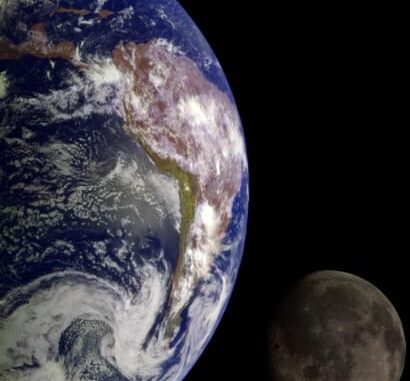
For anyone who has ever wished there were more hours in the day, geoscientists have some good news: Days on Earth are getting longer.
A new study that reconstructs the deep history of our planet’s relationship to the Moon shows that 1.4 billion years ago, a day on Earth lasted just over 18 hours. This is at least in part because the Moon was closer and changed the way the Earth spun around its axis.
“As the Moon moves away, the Earth is like a spinning figure skater who slows down as they stretch their arms out,” explains Stephen Meyers, professor of geoscience at the University of Wisconsin-Madison and co-author of the study published June 4 in the Proceedings of the National Academy of Sciences.
It describes a tool, a statistical method, that links astronomical theory with geological observation (called astrochronology) to look back on Earth’s geologic past, reconstruct the history of the solar system and understand ancient climate change as captured in the rock record.
“One of our ambitions was to use astrochronology to tell time in the most distant past, to develop very ancient geological time scales,” Meyers says. “We want to be able to study rocks that are billions of years old in a way that is comparable to how we study modern geologic processes.”
Earth’s movement in space is influenced by the other astronomical bodies that exert force on it, like other planets and the Moon. This helps determine variations in the Earth’s rotation around and wobble on its axis, and in the orbit the Earth traces around the Sun.
These variations are collectively known as Milankovitch cycles and they determine where sunlight is distributed on Earth, which also means they determine Earth’s climate rhythms. Scientists like Meyers have observed this climate rhythm in the rock record, spanning hundreds of millions of years.
But going back further, on the scale of billions of years, has proved challenging because typical geologic means, like radioisotope dating, do not provide the precision needed to identify the cycles. It’s also complicated by lack of knowledge of the history of the Moon.
LEAP SECONDS
Every now and then a leap second is added to Coordinated Universal Time (UTC) in order to synchronize clocks worldwide with the Earth’s ever-slowing rotation.
Two components are used to determine UTC:
International Atomic Time (TAI): A time scale that combines the output of some 200 highly precise atomic clocks worldwide, and provides the exact speed for our clocks to tick.
Universal Time (UT1), also known as Astronomical Time, refers to the Earth’s rotation around its own axis, which determines the length of a day.
Before the difference between UTC and UT1 reaches 0.9 seconds, a leap second is added to UTC and to clocks worldwide. By adding an additional second to the time count, our clocks are effectively stopped for that second to give Earth the opportunity to catch up.
The most recent leap second occurred on December 31, 2016 at 3:59:60 p.m. Pacific Standard Time (11:59 p.m. UTC).


Be the first to comment